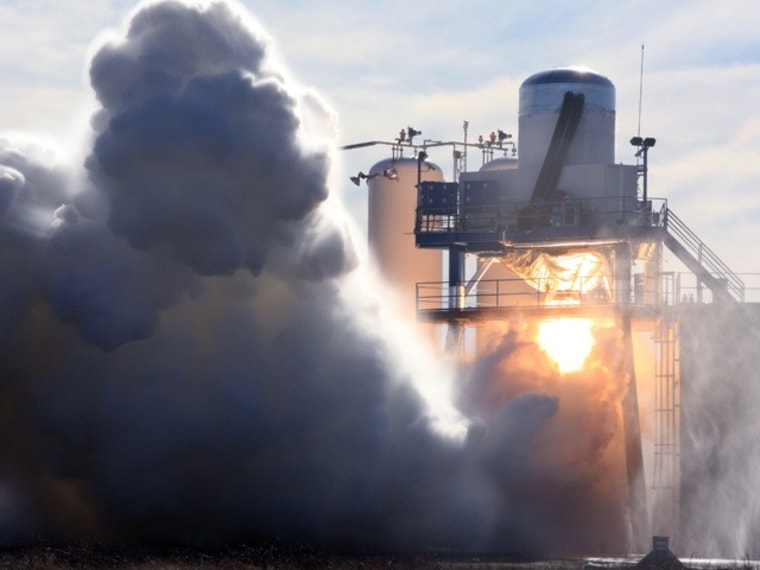A brand-new Falcon 9 rocket envisioned to launch commercial cargo ships to the International Space Station has passed its final engine test, clearing the way for its maiden flight in the next few months.
Built by Space Exploration Technologies (SpaceX) of Hawthorne, Calif., the Falcon 9 rocket is a two-stage booster designed to launch the company's Dragon spacecraft to orbit. It is the lynchpin rocket behind SpaceX's plan to launch cargo ships to the space station under a $1.6 billion contract with NASA.
SpaceX announced this week that the Falcon 9 rocket's second stage successfully completed a full-duration test firing at the company's proving grounds in Texas. The test was the last hurdle for the upcoming demonstration launch, which is targeted to lift off from Cape Canaveral Air Force Station in Florida.
"This was the final stage firing required for launch, so the second stage will soon be packaged for shipment and should arrive at Cape Canaveral by the end of the month," said SpaceX founder Elon Musk in a Jan. 4 update. "Depending on how well our full vehicle integration goes, launch should occur one to three months later."
SpaceX is one of two companies contracted by NASA to provide commercial cargo shipments to the International Space Station. Orbital Sciences, Corp., of Virginia, is building its own Cygnus vehicles and Taurus 2 rockets under a separate contract. Both companies had received seed money from NASA under its Commercial Orbital Transportation System (COTS) program aimed at spurring development of privately developed spacecraft.
The Falcon 9 rocket stands 180 feet (55 meters) tall and is the launch vehicle developed by SpaceX. The first, the smaller Falcon 1, made its first successful launch in 2008 and delivered its first commercial payload – a Malaysian communication satellite – into orbit last year.
2009 also saw several other milestones for SpaceX, including the delivery of the Dragon rendezvous laser sensor – called DragonEye – to the space station, the first training session with NASA astronauts to practice docking operations and successful tests of the protective material to be used on Dragon heat shields during re-entry.
In his update, Musk thanked NASA, the U.S. Air Force, the Federal Aviation Administration and SpaceX customers for their support and looked ahead to the Falcon 9 test flights planned for later this year.
"And of course, I'd like to thank the whole SpaceX team for their unwavering commitment to our company and our mission, especially over these last few months," Musk said. "Through their hard work and dedication, 2010 promises to be another great year."
More on: International Space Station
